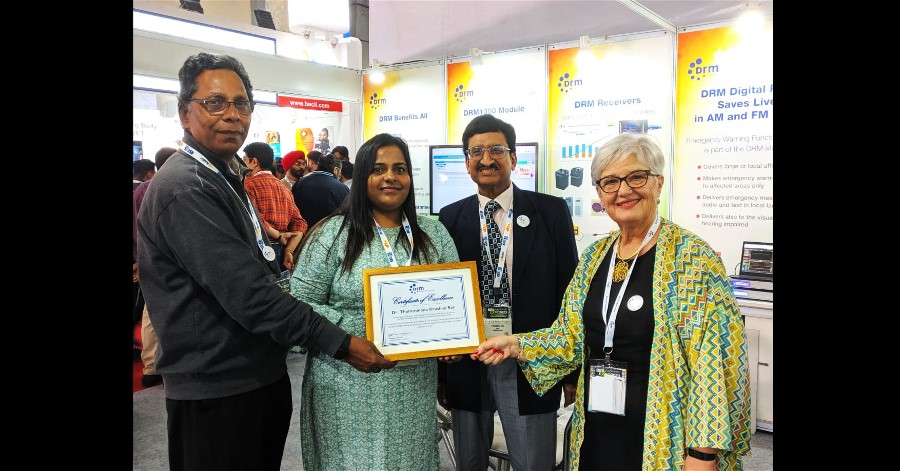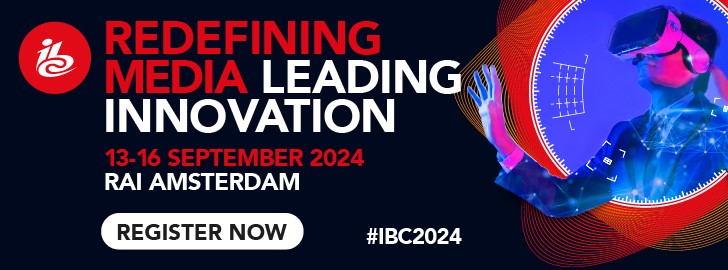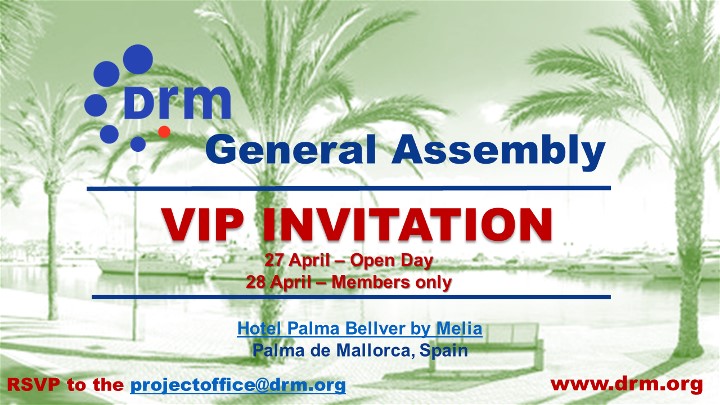It is a great privilege and honor for our Technological Online Portal to make true this Interview with Mrs. Ruxandra Obreja, Chairman of the DRM Consortium. Her great experience and knowledge of Digital Radio can only make a positive contribution to the knowledge base of our readers.
Text: Andreas Tzanakos
Images: DRM Consortium's Archive
What's the past, present and future of Digital Radio? What is DRM and what are its applications in FM, AM and SW? What is the current development of DRM worldwide, but also what's the true regarding DRM receivers (home, portable and car)? Can DRM be implemented in Greece and what is the best solution? What is the Journaline Text Service and what are the advantages of the Emergency Warning Functionality (EWF). These and other questions of critical importance are answered by Mrs. Ruxandra Obreja, providing more outlets for free to air broadcasting for modern Radio Broadcasters in Greece and around the world.
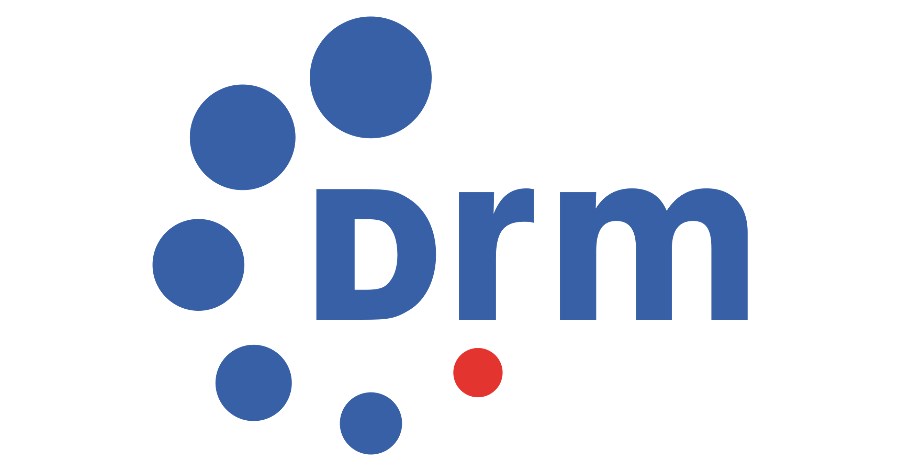
radiotvlink.com: First of all, thank you very much for your response to speak to our Technological Online Portal, knowing that you have a particularly demanding schedule. Now, we would like you to tell us about yourself so that our readers can get to know you a little better. We would also like you to tell us about your duties as DRM Consortium Chairman.
Ruxandra Obreja: The Digital Radio Mondiale (DRM) Consortium elected me as Chairman for the first time in 2008 while still employed by the BBC. The DRM Consortium is a not-for-profit international organisation, with members on all continents. I have been re-elected to this position every two years (last time in March 2022). As Chairman of the DRM Consortium, my mission has been the same: to work with the various stakeholders to see the global and mass scale take-up of the DRM standard and digital radio.
I have spent my previous career at the BBC World Service where I worked as a journalist, editor (Romanian and European services), commissioner of World Service English programmes and as Head of business development. I am a former vice-chair of the EBU international broadcasters' group (after 2005). I studied in Romania and in the UK, writing, presenting and producing for radio and TV in both countries.
I frequently write for the specialised press and make presentations to reputable international organisations. My latest blog is: https://www.drm.org/saving-radio-through-digital
I was presented with a prestigious Romanian award for my work in the media, with focus on digital radio.
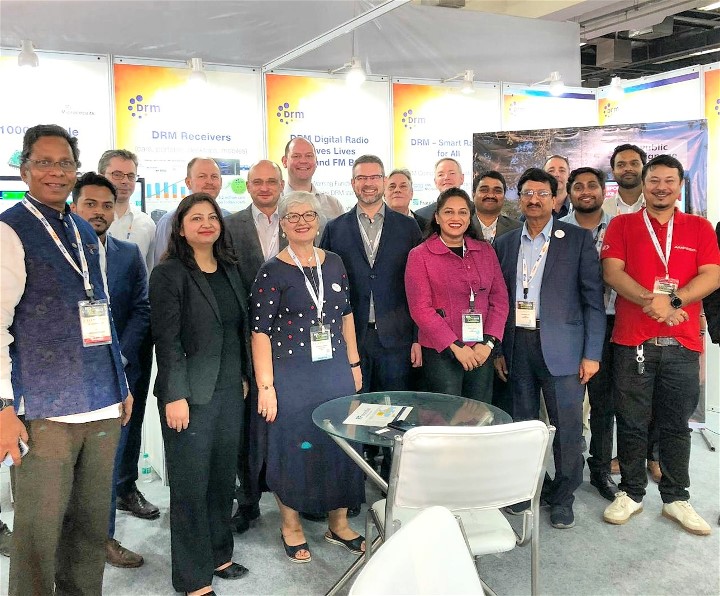
radiotvlink.com: When was the DRM Consortium founded? Who were then, but also what are its goals today?
Ruxandra Obreja: The Consortium was founded in 1998 at a meeting in China. The idea was to find a better digital alternative for the often unsatisfactory and crackly analogue AM. Engineers from the UK, France, Germany, US and other countries got together and devised a broadcasting standard that got over the shortcomings of analogue offering a solution with both perfect audio at large distances and the capacity to carry data. To reflect the many nationalities involved in its inception, the system was called Digital Radio Mondiale or DRM, using words in several languages. This new digital broadcasting system or standard focused at that time on the AM bands and was called DRM30. It was tested all over the world being recommended by ITU. Incidentally, some of the great engineers and specialists who invented the standard also worked on DAB, hence the compatibility of the two open standards.
After 2005, work in the Consortium started to extend DRM to the VHF bands: I, II (FM) and III. At first, this was called DRM+. But being seen like a more advanced DRM version (a bit like DAB and DAB+), the Consortium has decided to stress that the DRM is one standard, no matter whether used above or below 30 MHz, whether in shortwave or FM. DRM is the only open, digital ITU-recommended standard for all frequency bands, the only truly global standard with its key features on all frequencies. The DRM for VHF mode (E) was recommended by ITU only in 2011 and this is why it is the most modern, most flexible, and efficient solution for digitizing FM.
“Using its data carriage capacity and Journaline (the advanced text and image delivery feature), we have demonstrated that DRM can transmit to a DRM digital receiver those all-important emergency warnings, distance education, where internet is not available or has failed (and without data plan costs), traffic information multiplying and enhancing also the advertising possibilities. So, the economic and social attributes of DRM exceed clearly those of analogue. Moreover, DRM has demonstrated these extra benefits from word go and they are in use in some parts of the world already (India, Indonesia etc.), therefore they are not just a potential or test options. They are real and they work.”
radiotvlink.com: Which companies make up the DRM Consortium today? What do you think are the DRM Consortium's most important technological achievements to date?
Ruxandra Obreja: Over 100 organizations, companies and individuals are part of the DRM family today. They are spread all over the world and the key ones can be viewed on the home page of www.drm.org
Apart from the extension of DRM to the VHF bands, the standard has remained robust and up to date with some significant innovations of which I will only mention two: the adoption of the most modern low-bit, excellent performance xHE-AAC audio codec that is used in the mobile telephony and which aligns the standard with the mobile phone industry. Another recent development has been the extended capacity of a modern DRM transmitter (linked to one antenna) to host up to 6 DRM blocks. One block means up to three DRM audio channels and one data channel on one frequency of 100 kHz (half that of FM). Therefore, this one transmitter can carry up 18 DRM services or channels, and 6 data channels. This gives the opportunity to one broadcaster to host many more programmes of one broadcaster or to share the spectrum and many available channels with more stations, while these broadcasters maintain full control over their infrastructure, content, coverage, and costs. This development is just a super-efficient option, which broadcasters might want to consider when planning their radio digitisation. It underlines and proves that DRM is very flexible (allows so many players to use one transmitter, one antenna), is spectrum and energy efficient, as the costs of one transmitter can be shared among several players/broadcasters, while they all maintain their full independence and coverage scenarios.
There are many other modern aspects and technological advances, and you can get them by downloading: handbook.drm.org
“Digital Radio Mondiale (DRM) supports and provides a fully integrated disaster and early warning service called Emergency Warning Functionality (EWF). As mentioned earlier, Journaline, a key tool in the DRM standard makes sure that the emergency messages reach the affected people with detailed multi-lingual text and visual information and instructions.
The EWF support in receivers is mandatory and is described in a document called DRM Minimum Receiver Requirements (you can find it on DRM Consortium’s website). There is no need for special chipsets or extra adaptation for this service. Everything needed for EWF is part of the standard and can be built in the receivers according to the above specifications.
We recommend that the DRM technology should be the major building block of a national emergency warning policy, providing full and continuous services in case of disasters over the entire territory or parts of a country. Broadcasters need therefore to have a strong relationship with the specialist disaster authorities in any country.”
radiotvlink.com: In your opinion, what are the results of the DRM broadcast solutions implementation (financial, energy & environment, social, educational etc.) for the Radio Stations, which implement a DRM broadcast solution and for countries and their citizens who already use DRM services? I remind you that some claim that DRM is not a cheap and easy investment.
Ruxandra Obreja: DRM is a flexible, spectrum and energy saving solution. In AM the savings in energy can be 40-50%, or more depending on type, age and power of the transmitter. For FM, DRM delivers up to 90% savings in energy costs. I venture to say, this cannot be matched by other similar digitization solutions being considerably less than energy-hungry FM. To prove the energy and green credentials of DRM, we have created a free and easy to use energy calculator that will give broadcasters the report on their savings and green results by using their very own data: This email address is being protected from spambots. You need JavaScript enabled to view it.
One other feature of DRM, which actually makes it a more cost-effective standard, is the fact that analogue transmitters, if not very old, can be upgraded to DRM. This is then a much cheaper option than buying a new transmitter or setting up a whole new infrastructure.
But DRM is not just about using spectrum and energy better. It is about delivering so much more than good audio in FM but, so important, in AM, as well. Using its data carriage capacity and Journaline (the advanced text and image delivery feature), we have demonstrated that DRM can transmit to a DRM digital receiver those all-important emergency warnings, distance education, where internet is not available or has failed (and without data plan costs), traffic information multiplying and enhancing also the advertising possibilities. So, the economic and social attributes of DRM exceed clearly those of analogue. Moreover, DRM has demonstrated these extra benefits from word go and they are in use in some parts of the world already (India, Indonesia etc.), therefore they are not just a potential or test options. They are real and they work.
“We have noticed that during Covid several broadcasters, which had given up on shortwave returned to it. Now we notice increased interest in SW and digital SW due to the unstable situation in the world. Big broadcasters, in the UK and US for example, have returned to shortwave as a way of reaching populations that have no access to internet or to free information or to both.
SW allocation is internationally managed through HFCC and is not totally dependent on the national government of the moment in one territory. Shortwave is often crossing borders and does not need approval from the authorities in the target territory. It is a great asset that should be preserved and cherished but digitized, too. We have seen that when a country gives up shortwave there is always somebody else who will want to fill the void (the recent example was Australia whose shortwave frequencies towards the Pacific were snapped up by China, when given up for budgetary reasons freed). DRM in Shortwave can be used very effectively for example to send audio and text emergency warning in areas totally flattened by natural or man-made disasters. Shortwave is an insurance policy in unstable times and in DRM the big issue of energy consumption and its costs are solved. When everything else fails, a broadcast, even coming from great distances, can save lives and be a lifeline.”
radiotvlink.com: Some, around the world, are talking about replacing completely the analog FM transmissions (due to lack of spectrum or other reasons) with Digital Radio. What do you think is the best Digital Radio solution and why? What is best suited specifically for those countries that have a difficult topography, with many mountains, but also remote islands, such as Greece? And what are the choices for countries that do not have private AM or SW infrastructures (for example in Greece only the Greek Public Broadcaster ERT has) but only FM, like Greece?
Ruxandra Obreja: The answer is simple: DRM in all frequency bands. You would expect me to say this but, objectively this is the right, most accurate answer. For countries with large and complex topographies like Greece the only way is the DRM standard. The ultimate goal of every country in the world is to provide to all its citizens access to new technologies, in this instance to digital radio. Therefore, a country needs to be fully covered. The DRM solution for both AM and FM can be used by large national networks using DRM in mediumwave or shortwave even, and local and community stations using DRM in FM at a cost that cannot be matched by any multiplex solution on offer. A small Greek island cannot sustain a multiplex with lots of channels, as there are not enough players, e.g. broadcasters and advertisers in that market to fill the full multiplex and share the costs. A small station will always be able to digitise using the FM band, its transmitter (if not too old), its antenna. It only needs to add some digital enhancements and the station can have 2-3 digital channels on the air and a data channel that can be used for emergencies, advertisements, extra information etc. The station maintains its brand, its coverage or even can extend it a bit, and what is important: its independence. This model is not matched by any solution offered by our competitors.
“The DRM solution for both AM and FM can be used by large national networks using DRM in mediumwave or shortwave even, and local and community stations using DRM in FM at a cost that cannot be matched by any multiplex solution on offer. A small Greek island cannot sustain a multiplex with lots of channels, as there are not enough players, e.g. broadcasters and advertisers in that market to fill the full multiplex and share the costs. A small station will always be able to digitise using the FM band, its transmitter (if not too old), its antenna. It only needs to add some digital enhancements and the station can have 2-3 digital channels on the air and a data channel that can be used for emergencies, advertisements, extra information etc. The station maintains its brand, its coverage or even can extend it a bit, and what is important: its independence. This model is not matched by any solution offered by our competitors.”
radiotvlink.com: What, in your opinion, are the major differences between DRM and DAB+ Digital Radio? Do you agree with their possible coexistence as a choice for Broadcasters as well as for Radio listeners?
Ruxandra Obreja: As mentioned already, DRM works in all bands and not just in band III, the one vacated by TV. DAB+ is a very local solution and one that works very well for big broadcasters in big cities using a multiplex that gives all participants the same coverage, the same level playing field, if this is what is needed. As I had said at the beginning of this interview, DRM and DAB+ have common digital roots and a technical DNA and are therefore compatible. Countries like South Africa and those affiliated to ATU (Africa Telecommunications Union) have already recommended a dual solution: DRM in all bands and DAB+. The current chipsets support this option and if there is demand for DRM and DAB+, they can be used in cars and desktop, portable receivers etc.
“Another recent development has been the extended capacity of a modern DRM transmitter (linked to one antenna) to host up to 6 DRM blocks. One block means up to three DRM audio channels and one data channel on one frequency of 100 kHz (half that of FM). Therefore, this one transmitter can carry up 18 DRM services or channels, and 6 data channels.”
radiotvlink.com: There are many, worldwide, but also in Greece, who support the preservation of FM as it is now, but also the significant expansion of Radio's activities on Digital Platforms, by making use of both Fixed Internet and 5G Networks. What is the DRM Consortium's point of view on this trend?
Ruxandra Obreja: We believe that the future of radio is digital, that FM has been extremely successful for many decades now but will not last forever, despite the legacy of millions of receivers, some very cheap, too. Usage shows that once listeners get the taste for digital, they do not want to return to the very popular but by now old analogue FM. The expansion and development of internet and 5G is a reality but internet is a 'one to one' solution and free- to-air broadcasting is 'one to many'. We think that 5G is still developing, is not primarily meant for radio and is definitely not a solution for radio yet; it is possibly a quite complicated telecom solution for something that is simple, adaptable in the broadcast domain and does not need so much processing power.
We feel that by waiting for 5G to frog leap digital radio, those mesmerized by the term are missing the boat. Digital radio needs to happen now to future proof radio broadcasting. Maybe someday there will be a blend with 5G. But not yet and not for sure.
radiotvlink.com: What is DRM's technological proposition for FM today? Please refer in detail to its specifications, technical characteristics and advantages. Also, it is important to make an economic-technical comparison between standard-classic analog FM transmission and DRM transmission for FM.
Ruxandra Obreja: This is a rather complicated or very simple question; it depends on how much time you have. To do an in-depth analysis of the two standards would take me months and many pages. DRM in FM delivers up to 3 programmes and 1 data channel on half the spectrum of one single FM programme (100kHz). It saves spectrum, energy and adds the extra multimedia services which analogue cannot deliver. DRM does not cause interference to analogue, can even extend the coverage area, and enhances the experience the listeners will get. There is no comparison between a standard of the 20th century with one used here and now. More information can be obtained from www.drm.org (how DRM sounds, what trials have been done and what they showed when doing the comparison etc.).
“DRM is very flexible (allows so many players to use one transmitter, one antenna), is spectrum and energy efficient, as the costs of one transmitter can be shared among several players/broadcasters, while they all maintain their full independence and coverage scenarios.”
radiotvlink.com: Some months ago, an issue was raised by ERT, the Public Broadcaster of Greece, to stop the operation of the Shortwave Transmission Center in the Avlida area. What is your opinion about such a move, regardless of the reasons put forward for the shutdown in Greece as well as in other countries? How many and which countries utilize Shortwave as well as Digital Shortwave with DRM Technology? Are there examples of other countries that trusted internet and satellite proposals, but eventually returned to Shortwaves due to various problems (military, political and other issues)? How easy is it to acquire a new or to upgrade an older Shortwave Transmission System? What DRM Consortium recommend to Broadcasters for the best and most economical-efficient use of Shortwave?
Ruxandra Obreja: Shortwave suffers from an image problem as it is often seen as crackly, old, a bit of a Cold War era system. It is also true that analogue shortwave transmissions have declined over the last 20 years. One reason is that with shortwave you can cover countries, even continents. Radio Romania International broadcasts in DRM in Spanish to Latin America and we have perfect audio recordings of transmissions received in Brazil and Argentina, for example. This shows the power of digital to get rid of poor fading and crackling sound!
As explained, in DRM the energy consumption is reduced considerably with a net gain in audio and also data carriage possibilities.
We have noticed that during Covid several broadcasters, which had given up on shortwave returned to it. Now we notice increased interest in SW and digital SW due to the unstable situation in the world. Big broadcasters, in the UK and US for example, have returned to shortwave as a way of reaching populations that have no access to internet or to free information or to both.
SW allocation is internationally managed through HFCC and is not totally dependent on the national government of the moment in one territory. Shortwave is often crossing borders and does not need approval from the authorities in the target territory. It is a great asset that should be preserved and cherished but digitized, too. We have seen that when a country gives up shortwave there is always somebody else who will want to fill the void (the recent example was Australia whose shortwave frequencies towards the Pacific were snapped up by China, when given up for budgetary reasons freed). DRM in Shortwave can be used very effectively for example to send audio and text emergency warning in areas totally flattened by natural or man-made disasters. Shortwave is an insurance policy in unstable times and in DRM the big issue of energy consumption and its costs are solved. When everything else fails, a broadcast, even coming from great distances, can save lives and be a lifeline.
“The expansion and development of internet and 5G is a reality but internet is a 'one to one' solution and free- to-air broadcasting is 'one to many'. We think that 5G is still developing, is not primarily meant for radio and is definitely not a solution for radio yet; it is possibly a quite complicated telecom solution for something that is simple, adaptable in the broadcast domain and does not need so much processing power.
We feel that by waiting for 5G to frog leap digital radio, those mesmerized by the term are missing the boat. Digital radio needs to happen now to future proof radio broadcasting. Maybe someday there will be a blend with 5G. But not yet and not for sure.”
radiotvlink.com: What is the solution that DRM offers today for Digital AM? In what cases, in your opinion, is the use of DRM Digital AM mandatory? Is it an easy task to upgrade older AM Systems?
Ruxandra Obreja: Mandatory is a difficult word as this decision can only be taken by the governments, regulators, and broadcasters. DRM in AM is a tried and tested solution. Only in India about 900 million people are in the incidence of DRM AM transmissions. China too uses DRM in SW domestically.
The upgrade of an AM transmitter can be an easy or very hard task. The main thing is the age of the transmitter and if it can be linearised. To transform an analogue, youngish transmitter (let us say no older than 10-15 years) a few extra bits are necessary to digitise it: a content server, a modulator and an exciter. Sometimes the modulator is already incorporated in the transmitter. The best answer will come though from the manufacturers of the transmitters which can help with the digitisation.
“DRM is a flexible, spectrum and energy saving solution. In AM the savings in energy can be 40-50%, or more depending on type, age and power of the transmitter. For FM, DRM delivers up to 90% savings in energy costs. I venture to say, this cannot be matched by other similar digitization solutions being considerably less than energy-hungry FM.”
radiotvlink.com: Please refer in brief some examples regarding the implementation and effectiveness of the Journaline Text Service offered by DRM Technology.
Ruxandra Obreja: Journaline is the advanced text service for DRM. Technically it is standardized and open in the same way as all other DRM components. For the listeners perspective it provides information directly to the radio set's screen effortlessly.
Journaline plays a particularly important role for DRM's built-in Emergency Warning Functionality (DRM-EWF) by providing detailed, multilingual information and instructions for instant and interactive look-up by the user.
In the context of Radio Schooling Services, Journaline represents the textbook component which accompanies the audio lessons and also allows for self-study at any time in multiple languages accessible by students on demand.
radiotvlink.com: I would like you to elaborate on the Emergency Warning Functionality (EWF) and its benefits. Please mention some examples from its implementation.
Ruxandra Obreja: Digital Radio Mondiale (DRM) supports and provides a fully integrated disaster and early warning service called Emergency Warning Functionality (EWF). As mentioned earlier, Journaline, a key tool in the DRM standard makes sure that the emergency messages reach the affected people with detailed multi-lingual text and visual information and instructions.
The EWF support in receivers is mandatory and is described in a document called DRM Minimum Receiver Requirements (you can find it on DRM Consortium’s website). There is no need for special chipsets or extra adaptation for this service. Everything needed for EWF is part of the standard and can be built in the receivers according to the above specifications.
We recommend that the DRM technology should be the major building block of a national emergency warning policy, providing full and continuous services in case of disasters over the entire territory or parts of a country. Broadcasters need therefore to have a strong relationship with the specialist disaster authorities in any country.
This is an important feature of DRM and is best illustrated in the following Video:
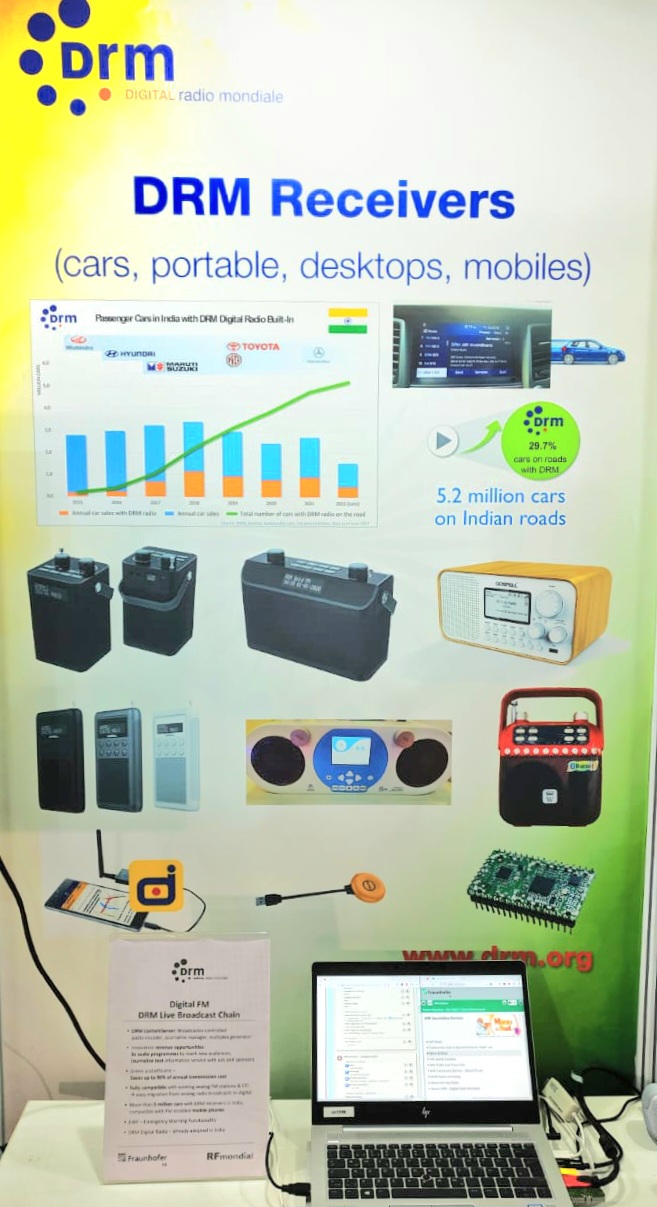
radiotvlink.com: What is the current development of DRM worldwide, but also what's the true regarding DRM receivers (home, portable and car)?
Ruxandra Obreja: Steadfast work continues for getting new and ingenious receiving solutions to the market. Now over 5 million new cars with line-fit DRM receivers (for AM for now) are on the roads in India. There are solutions and recently one of our Consortium members launched a cheap and energy-saving module that could be the heart of affordable, locally produced and simple receivers. There are also an App and SDR solutions, but the truth is that getting digital receivers to become objects of desire and be acquired by users is a continuous struggle. We see car receivers as a very important development, followed by standalone and mobile apps, a permanent challenge for all digital standards. What is needed to digitise radio, is large orders of receivers by the countries rolling out the standard, so that radio manufacturers can produce mass market devices at an affordable price.
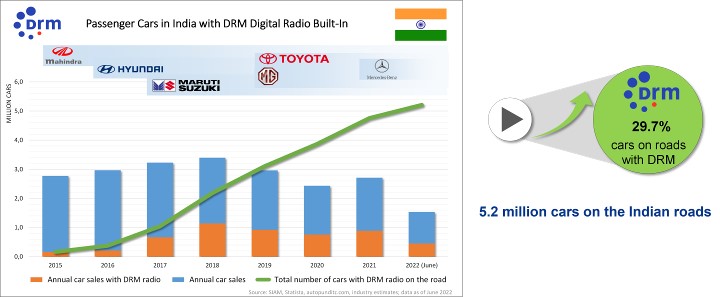
radiotvlink.com: Concluding this Interview, would you like to send a clear message to the Greeks, but also to the Radio Broadcasters all over the world?
Ruxandra Obreja: My message is simple. Digital is all around us. Radio is the friend in your ear, the companion, with such simplicity and mobility that nothing can match it.
For our Greek friends and listeners, I would simply say: look at DRM, let us work together so you can see its great attributes. Organise a DRM demonstration of a few months to get a feel of what it can do for the country, as Denmark (for FM) and the Czech Republic (for mediumwave) are doing now. DRM can offer alone or together with another open standard the only solution for digitizing radio in Greece, not only in Plaka but also in the mountains of the north and the many islands that make up this unique and wonderful country. There from the beginning of history, it cannot miss the digital radio boat!
radiotvlink.com: I feel that with this discussion we have covered a wide range of issues that concern Radio Broadcasters. Thank you so much.



